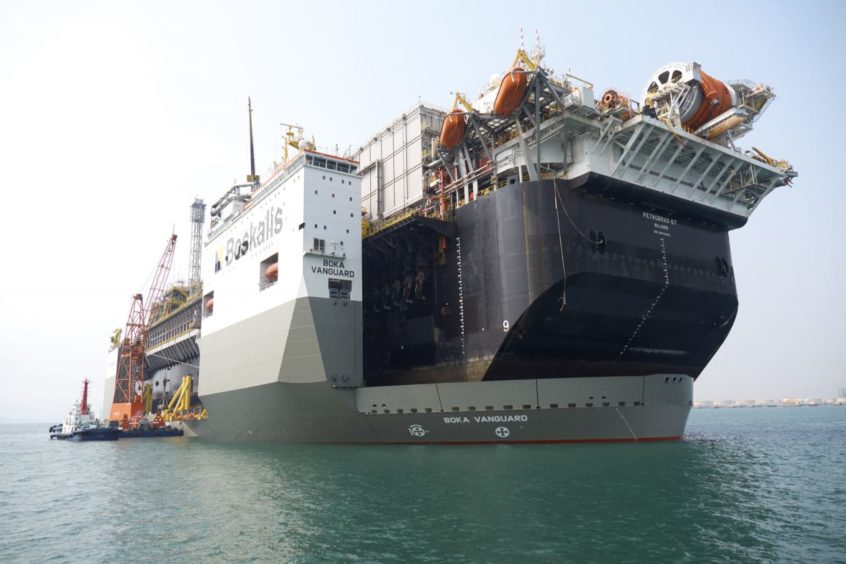
The short-term impact of the coronavirus has been seen almost entirely on demand, reducing China’s need for oil and LNG supplies.
Should the virus drag on for longer, though, it will start to have an impact on maritime construction plans. The Chinese government responded to the virus by effectively extending the Lunar holiday, preventing workers from returning to sites. This has officially ended but traffic data from Chinese cities continue to show extremely low levels of activity.
The true extent of the problem will only become evident as the trajectory of the virus becomes clear.
Between February 7 and 12, the number of confirmed cases in China, according to the World Health Organisation (WHO), increased from 31,211 to 44,730. The province at the centre of the outbreak, Hubei, rose from 22,112 to 33,366.
The province’s main city Wuhan was locked down on January 23, followed by a number of other cities in the days that followed.
Despite this, the virus has spread. The WHO has reported the next highest number of cases in Guangdong followed by Zhejiang, with 1,219 and 1,131 apiece.
Scepticism has been expressed about the validity of Chinese data and the way in which information has been controlled. A decision by the Chinese government on February 13 to change the way in which cases were counted – increasing the number of cases in Hubei by around 15,000 and deaths by 242 – seemed to bear out the uncertainty around the data.
Construction crunch
“Although many FPSOs and other modules for facilities for the oil and gas industry are under construction in China, we believe that the Coronavirus break-out has to escalate substantially for it to have any significant impact on delayed deliveries of these units and hence delayed production start-up,” said Rystad Energy’s head of oilfield service research Audun Martinsen.
Energean has also issued a warning over potential delays to its Karish gas field, offshore Israel. The hull for the development is under construction at Liuheng Island, in Zhejiang Province, which is currently listed by the WHO as having the third highest number of cases.
Most companies have not yet issued similar warnings. SBM Offshore, for instance, is building the hull of its FPSO Sepetiba at a Chinese yard but did not comment on the potential impact of the coronavirus on its plans in its annual results this week.
Tanker companies have provided a little more guidance on the issue. Oslo-listed 2020 Bulkers said the New Times Shipyard (NTS) had declared force majeure on February 5.
The facility was building two drybulk vessels for 2020 Bulkers. Work had been one month ahead of schedule before the declaration. How things progress over the next month will determine whether there will be delays from the original date.
NTS is in Jiangsu, put by the WHO at eighth in China, with 515 cases as of February 11.
Mitsui OSK Lines (MOL) said the virus would reduce the supply of vessels as workers have been prevented from gathering in Chinese dockyards. There are a number of vessels in yards for scrubber installation, it noted, in addition to a likely slowing of cargo handling.
Timing
The impact of the illness on newbuild programmes will be determined by the speed with which it spreads and the response to the problem.
The coronavirus’ genome has been rapidly mapped, giving researchers the chance to analyse the virus and potentially seek a cure or vaccine. The virus is related to SARS, of which there was an outbreak in 2003 in China. Mapping SARS took some months.
Coronavirus kills a smaller number of those who catch the virus than SARS or MERS, which are related illnesses, Deaths appear to be concentrated among at-risk populations, such as those who are immune compromised or old.
A paper in the Lancet last week called for “substantial, even draconian measures” to limit the spread within populations. The paper, which used air traffic data to forecast potential lines of transmission, said “epidemics are already growing exponentially in multiple major cities of China”.
With no reduction in transmissibility, the Wuhan epidemic will peak in April, with the other cities following one or two weeks behind, the paper by Hong Kong academics forecasted.
Rystad expects the coronavirus to cause delays to construction of two to four weeks “as some extra precautionary actions have been taken, but this is a delay that can be mitigated and compensated somewhere else in the supply chain. If a delay’s duration reaches three months, then it likely starts to impact production timing,” Martinsen said.
